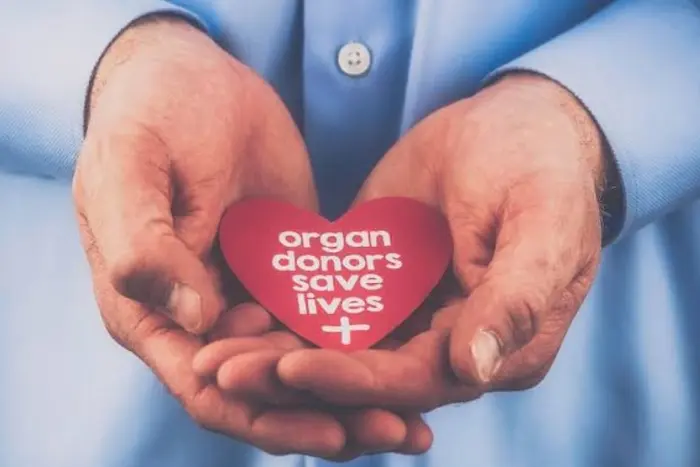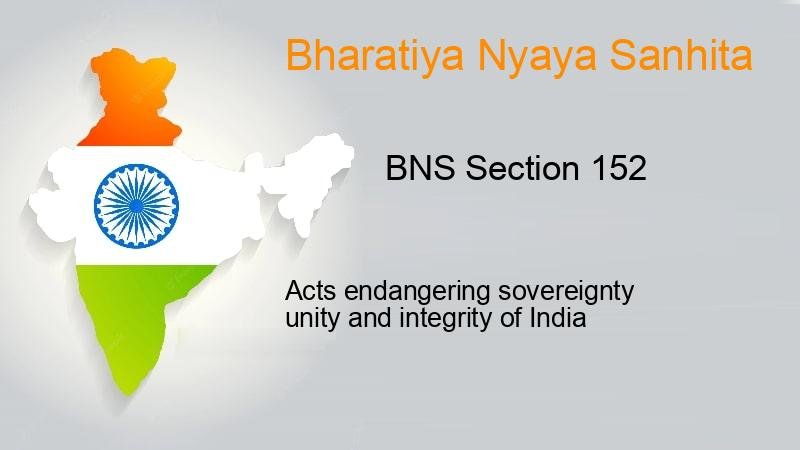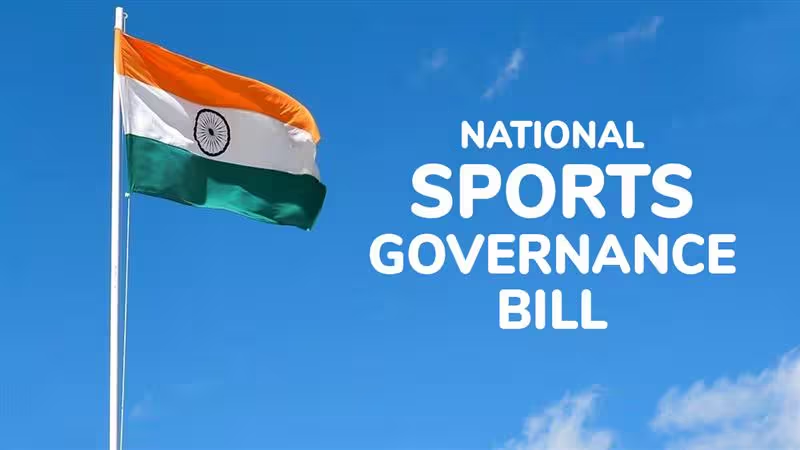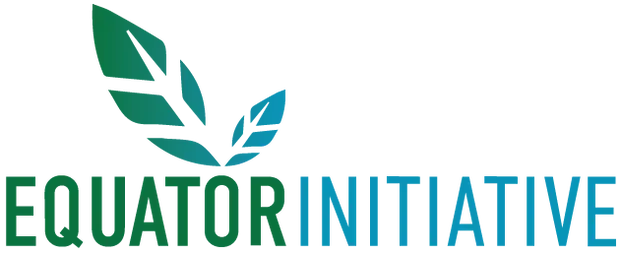1. Recognising Organ Donation as a Lifeline – Governance

Why in News:
On the occasion of World Organ Donation Day (August 13), attention has turned to India’s critically low organ donation rate, which stands at 0.8 per million people — far below global leaders like Spain and the USA (over 45 per million).
This organ shortage leads to over 500,000 preventable deaths annually, highlighting a serious public health and governance issue. Despite improvements in the total number of transplants (4,990 in 2013 to 18,378 in 2023), deceased donor numbers remain alarmingly low (only 1,099 in 2023).
Key Concepts & Detailed Insights
India’s Low Organ Donation Rate
- Only 0.8 donors per million population.
- Compared to global best practices — Spain (46 pmp), USA (38 pmp) — India’s rate is critically inadequate.
- Leads to huge supply-demand gap, causing avoidable mortality.
Myths & Misconceptions Hampering Donation
- Fear of body disfigurement for funeral rites; in truth, organs are removed respectfully and without visible impact.
- Religious beliefs: Most major religions support organ donation as an act of compassion and service.
- Misbelief that only young, accident victims can donate; in reality, older donors and those dying naturally can contribute organs like kidneys, corneas, heart valves, bones, skin, etc.
Brain Death Certification Process
- Governed by the Transplantation of Human Organs and Tissues Act, 1994.
- Requires multiple expert confirmations, ensuring transparency and ethical compliance.
- Counters public fears of premature declaration of death for organ harvesting.
Need for Community & Public Engagement
- Educational campaigns, school curricula, and community programs can normalize donation.
- Doctors and hospital staff must proactively counsel grieving families.
- Registration as an organ donor and respect for donor wishes must be promoted as civic duties.
Exam Connect – Possible Questions
Prelims
- Consider the following statements about organ donation in India:
1. Brain death certification in India is governed by the Transplantation of Human Organs and Tissues Act, 1994.
2. Organ retrieval for donation always results in disfigurement of the donor’s body.
3. Only accident victims below the age of 40 can be organ donors.
Which of the above statements is/are correct?
A. 1 only
B. 1 and 2 only
C. 2 and 3 only
D. 1, 2 and 3
Answer: A. 1 only - World Organ Donation Day is observed annually on:
A. July 11
B. August 13
C. September 25
D. October 2
Answer: B. August 13
Mains
- “Organ donation in India is not merely a medical issue but a governance and societal challenge.” Discuss the major roadblocks in organ donation in India and suggest policy measures to improve the situation. (250 words)
- Highlight the ethical, legal, and administrative challenges involved in brain death certification and organ donation in India.
How can public trust be built in the organ donation ecosystem? (250 words)
2. Section 152 of the Bharatiya Nyaya Sanhita (BNS) – Polity

Why in News:
The Supreme Court of India has raised constitutional concerns regarding Section 152 of the Bharatiya Nyaya Sanhita (BNS), which criminalizes acts endangering India’s sovereignty, unity, and integrity. The Court is questioning whether the “potential for abuse” in this broadly worded provision could make it unconstitutional, similar to ongoing debates around the sedition law (Section 124A IPC).
Key Concepts & Detailed Explanation
About Section 152 – BNS (2023)
- Replaces the controversial Section 124A of the IPC (Sedition Law).
- Comes into effect from July 1, 2024 under the new criminal law framework.
Scope of the Section:
Criminalizes purposeful or knowing acts that:
- Excite secession or armed rebellion
- Encourage separatist tendencies
- Endanger sovereignty, unity, or integrity of India
Mediums Covered:
- Spoken/written words, signs, representations
- Electronic communications
- Financial support
- Any other method
Punishment:
- Life imprisonment or up to 7 years of imprisonment and a fine
- Cognizable and non-bailable
- Triable by Court of Session
Exception Clause:
- Lawful criticism of the government is not punishable, as long as it doesn’t incite secession or rebellion.
Key Differences from Section 124A (IPC):
| Feature | Section 124A IPC | Section 152 BNS |
|---|---|---|
| Focus | Disaffection against Government | Threats to sovereignty and integrity |
| Digital/financial means | Not explicitly included | Explicitly included |
| Criticism clause | Vague | Exception for lawful dissent is clear |
Concerns & Criticism
1. Potential for Misuse
- Ambiguous terms like “endanger sovereignty” can be used to suppress dissent, journalism, and activism.
2. Vagueness
- Undefined legal concepts (e.g., “sovereignty in the context of speech”) may lead to arbitrary or selective interpretation.
3. Similarity to Sedition Law
- Despite new language, it retains the suppressive spirit of Section 124A.
4. Chilling Effect on Free Speech
- Fear of arrest may force self-censorship, especially in academia, media, and civil society.
5. Harsh Penal Provisions
- Cognizable and non-bailable nature gives wide powers to police, raising civil liberties concerns.
6. Surveillance Overreach
- Inclusion of electronic and financial means expands state’s surveillance authority into private digital activity.
7. Judicial Burden
- Frequent legal challenges expected as courts must balance free speech (Article 19(1)(a)) with national security.
Exam Connect – Possible Questions
Prelims
- Which of the following statements about Section 152 of the Bharatiya Nyaya Sanhita (BNS) is/are correct?
1. It replaces Section 124A of the Indian Penal Code.
2. It criminalizes lawful criticism of the government.
3. It includes digital and financial means as part of prosecutable actions.
A. 1 and 3 only
B. 1 and 2 only
C. 2 and 3 only
D. 1, 2, and 3
Answer: A. 1 and 3 only - Which Article of the Indian Constitution guarantees the right to freedom of speech and expression?
A. Article 14
B. Article 19(1)(a)
C. Article 21
D. Article 32
Answer: B. Article 19(1)(a)
Mains
- “The shift from Section 124A IPC to Section 152 of BNS may be symbolic, but not substantive.” Critically examine this statement in the context of free speech and national security. (250 words)
- Discuss the constitutional implications of criminal provisions that are vague and open to subjective interpretation. In this context, evaluate the potential misuse of Section 152 of the Bharatiya Nyaya Sanhita. (250 words)
3. State Health Regulatory Excellence Index (SHRESTH) – Governance
Why in News:
The Union Health Secretary has officially launched the State Health Regulatory Excellence Index (SHRESTH) through a virtual event. This initiative is designed to benchmark and strengthen state-level drug regulatory systems, aiming for uniformity in drug safety and quality across India.
Key Concepts & Detailed Explanation
What is SHRESTH?
- SHRESTH stands for State Health Regulatory Excellence Index.
- It is a national benchmarking initiative developed by the Central Drugs Standard Control Organization (CDSCO).
- Aims to evaluate and improve the performance of state drug regulatory authorities.
Objectives of SHRESTH:
- Promote uniform regulatory standards in drug control across India.
- Strengthen systems related to drug manufacturing, distribution, and enforcement.
- Encourage digitization, transparency, and infrastructure enhancement in state drug regulation.
Key Features of the SHRESTH Index:
| Feature | Description |
|---|---|
| Metrics | 27 indicators for manufacturing states and 23 for primarily distribution states |
| Frequency | Monthly data submission by states |
| Data Timeline | Submitted by 25th of each month; evaluation shared by the 1st of the next month |
| Data Collection Agency | Central Drugs Standard Control Organization (CDSCO) |
| Focus Areas | Human resources, infrastructure, digitization, enforcement efficiency |
Significance of SHRESTH:
- Enables comparative performance analysis among states.
- Identifies gaps in regulation, including human resource shortages and outdated infrastructure.
- Facilitates targeted capacity-building efforts by both state and central governments.
- Enhances public health safety by ensuring high standards of drug manufacturing and distribution.
- Encourages a data-driven approach to policymaking in the pharmaceutical regulatory sector.
Exam Connect – Possible Questions
Prelims
- The State Health Regulatory Excellence Index (SHRESTH) is an initiative launched by which of the following organizations?
A. NITI Aayog
B. National Health Authority (NHA)
C. Central Drugs Standard Control Organization (CDSCO)
D. Indian Council of Medical Research (ICMR)
Answer: C. Central Drugs Standard Control Organization (CDSCO) - Which of the following statements is/are correct regarding the SHRESTH Index?
1. It has separate metrics for manufacturing and distribution states.
2. It is evaluated quarterly by the Union Ministry of Health and Family Welfare.
3. It aims to promote uniform drug regulation across states.
A. 1 and 3 only
B. 2 and 3 only
C.1 and 2 only
D. 1, 2, and 3
Answer: A. 1 and 3 only
Mains
- “Ensuring drug safety is not just a regulatory issue but a governance imperative.” Examine the role of initiatives like the SHRESTH Index in strengthening drug regulation across Indian states. (250 words)
- Discuss the challenges faced by state-level drug regulatory systems in India. How can a centralized benchmarking tool like SHRESTH help address these challenges? (250 words)
4. Supreme Court’s Order on Street Dogs in Delhi – Legal, Constitutional, and Governance Implications – Governance
Why in News:
On August 11, 2025, the Supreme Court of India, acting suo motu, ordered the relocation of all street dogs in Delhi to shelters within 8 weeks, citing recent fatal attacks on infants. While the order addresses public safety, it has raised serious concerns regarding animal rights, judicial overreach, and failures in local governance.
Key Concepts & Detailed Explanation
Background of the Issue
- Triggered by media reports of fatal street dog attacks, particularly involving infants and elderly.
- Supreme Court invoked Article 32 to issue directions for public safety, bypassing inputs from relevant stakeholders.
Legal and Constitutional Conflicts
Contradiction with Existing Laws:
- Prevention of Cruelty to Animals (PCA) Act, 1960: Protects animals from unnecessary harm and mandates humane treatment.
- Animal Birth Control (ABC) Rules, 2023: Advocate sterilization and vaccination, not relocation or culling.
- Supreme Court Precedents: Previous judgments have held that stray dogs cannot be indiscriminately removed or killed, as it violates the law.
Violation of Natural Justice:
- Audi alteram partem (“hear the other side”) violated — animal welfare bodies and municipal authorities were not heard before passing the order.
Stare Decisis Undermined:
- Ignoring past SC rulings weakens judicial consistency and erodes public trust in the legal system.
Governance Failures Highlighted
- Municipal negligence in dog sterilization, vaccination, and shelter provision.
- Failure to implement ABC programs as per law.
- Lack of urban planning and civic coordination between municipal corporations and health departments.
Balancing Public Safety and Animal Rights
- The ruling raises an important debate: How to protect citizens without violating animal welfare laws?
- Calls for a data-driven, humane, and decentralized approach:
- Public awareness
- Community participation
- Strengthening shelter infrastructure
- Scientific dog population management
Exam Connect – Possible Questions
Prelims
- Which of the following laws govern the humane management of street dogs in India?
1. Prevention of Cruelty to Animals Act, 1960
2. Animal Birth Control Rules, 2023
3. Wildlife Protection Act, 1972
A. 1 and 2 only
B. 1 and 3 only
C. 2 and 3 only
D.1, 2 and 3
Answer: A. 1 and 2 only - The principle of Audi alteram partem, recently in news, is related to:
A. Fundamental Duties
B. Separation of Powers
C. Natural Justice
D. Directive Principles of State Policy
Answer: C. Natural Justice
Mains
- “The recent Supreme Court order on relocating street dogs highlights the tension between judicial activism and governance gaps.” Examine the constitutional, legal, and administrative dimensions of this issue. (250 words)
- Discuss the challenges in managing urban stray animal populations in India. Suggest policy reforms to ensure both public safety and animal welfare. (250 words)
5. National Sports Governance Bill Clears Hurdle Amid BCCI’s Historic RTI Resistance – Polity

Why in News:
The Rajya Sabha has passed the National Sports Governance Bill, 2025, following its clearance in the Lok Sabha. The Bill aims to bring national sports bodies under a regulatory framework to ensure transparency and accountability. However, it has stirred controversy for excluding the BCCI from RTI coverage, despite long-standing judicial recommendations pushing for its inclusion.
Key Concepts & Detailed Explanation
What is the National Sports Governance Bill, 2025?
- A central legislation to regulate national sports federations, ensuring they follow good governance principles.
- Seeks to align Indian sports governance with global best practices.
- Introduces performance audits, code of ethics, term limits, and conflict of interest clauses for office bearers.
Key Features of the Bill:
| Provision | Details |
|---|---|
| Regulation | Sports federations must register and comply with governance norms set by a proposed National Sports Ethics Commission. |
| RTI Application | Applies only to sports bodies receiving direct government financial assistance. |
| Autonomy vs. Accountability | The Bill maintains autonomy of sports bodies but enforces reporting and transparency requirements for those under its scope. |
BCCI and the RTI Controversy
Why BCCI is Exempt:
- As per the Bill, only sports bodies receiving direct public funds qualify as public authorities under the RTI Act, 2005.
- BCCI claims it does not receive such funding and is registered under the Tamil Nadu Societies Registration Act, 1975.
- Hence, it argues it is a private autonomous body, not liable under RTI.
Judicial and Legal Recommendations:
- The Supreme Court, Law Commission of India (2017), and Central Information Commission (CIC) have all recommended BCCI be declared a public authority.
- Their reasoning: BCCI performs public functions, represents India in international cricket, and exercises monopolistic control over the sport.
Implications of RTI Inclusion:
- If brought under RTI, citizens could access:
- Team selection criteria
- Broadcasting and sponsorship deals
- Conflict of interest details
- Contractual obligations with players and franchises
- Could dramatically enhance transparency and public trust.
Concerns Raised:
- Opposition parties argue the bill:
- Favors BCCI by creating a loophole for its exclusion.
- Centralizes power in sports governance.
- May reduce federal autonomy of state-level sports bodies.
Exam Connect – Possible Questions
Prelims
- Which of the following are considered “public authorities” under the RTI Act, 2005?
1. Bodies established by the Constitution
2. Bodies receiving substantial government funding
3. Private associations registered under Societies Registration Act without any government funding
A.1 and 2 only
B. 1 and 3 only
C. 2 and 3 only
D1, 2 and 3
Answer: A. 1 and 2 only - The National Sports Governance Bill, 2025 aims to:
A. Promote privatization of sports institutions
B. Regulate foreign sports broadcasts
C. Establish a framework for transparency and ethical governance in national sports bodies
D. Abolish state-level sports federations
Answer: C. Establish a framework for transparency and ethical governance in national sports bodies
Mains
- “Sports governance in India suffers from a lack of transparency and legal accountability.” Examine this statement in light of the National Sports Governance Bill, 2025 and the BCCI’s exemption from RTI. (250 words)
- Discuss the constitutional and legal arguments for and against bringing the BCCI under the RTI Act. What would be the implications of such a move on sports governance in India? (250 words)
6. India Semiconductor Mission (ISM) – Economy

Why in News:
The Union Cabinet has approved four new projects under the India Semiconductor Mission (ISM) to further strengthen India’s ambition of becoming a global hub for semiconductor and display manufacturing. These approvals reflect India’s commitment to self-reliance in electronics and strategic components.
Key Concepts & Detailed Explanation
What is the India Semiconductor Mission (ISM)?
- Launched in 2021 as a flagship initiative under the Ministry of Electronics and Information Technology (MeitY).
- Aim: To develop a sustainable semiconductor and display manufacturing ecosystem in India.
- Managed under the Semicon India Programme, with a budgetary outlay of ₹76,000 crore.
Scope and Functions:
- Supports the entire semiconductor value chain:
- Chip design
- Wafer fabrication
- Assembly, testing, and packaging (ATMP/OSAT)
- Display manufacturing
- Research and development
- Talent development and startup incubation
- ISM is responsible for:
- Receiving and evaluating proposals
- Implementing fiscal and policy support
- Attracting global investment
- Building partnerships with academia and industry
Key Components of the ISM
| Scheme | Objective |
|---|---|
| Semiconductor Fabs Scheme | Fiscal support to establish semiconductor wafer fabrication plants (Greenfield projects) |
| Display Fabs Scheme | Incentives for TFT LCD and AMOLED display manufacturing |
| Compound Semiconductors / Silicon Photonics / Sensors Fab & ATMP/OSAT Scheme | Promote advanced semiconductor manufacturing and packaging facilities |
| Design Linked Incentive (DLI) Scheme | Support for semiconductor design, ICs, SoCs, chipsets, and startup innovation; implemented by C-DAC |
| Modernisation of Semiconductor Laboratory (SCL), Mohali | Upgrade of existing government facility into a brownfield fabrication lab with modern capabilities |
Strategic Importance of ISM:
- Reduces dependence on imports of strategic electronics components.
- Ensures supply chain resilience in times of global chip shortages.
- Enhances technological sovereignty and supports Make in India and Digital India.
- Creates high-skilled jobs and promotes R&D and startup ecosystem.
- Positions India as a global alternative in the semiconductor supply chain, amid US-China tech rivalry.
Exam Connect – Possible Questions
Prelims
- Which of the following components are part of the India Semiconductor Mission (ISM)?
1. Display Fabs Scheme
2. Design Linked Incentive Scheme
3. ATMP/OSAT Scheme
4. BharatNet Connectivity Scheme
A. 1, 2 and 3 only
B. 1 and 4 only
C. 2 and 4 only
D. All of the above
Answer: A. 1, 2 and 3 only - The Semiconductor Laboratory (SCL), recently in news for modernization, is located in:
A. Bengaluru
B. Pune
C. Mohali
D. Hyderabad
Answer: C. Mohali
Mains
- “Semiconductor manufacturing is vital for India’s economic security and digital independence.” Discuss the role of the India Semiconductor Mission in achieving this objective. (250 words)
- Examine the challenges and opportunities for India in becoming a global semiconductor manufacturing hub. What reforms are necessary to strengthen the India Semiconductor Mission? (250 words)
7. UNDP Equator Initiative Award – Recognising Grassroots Climate Leadership – International Relations

Why in News:
A Self-Help Group (SHG) from Teertha village, Kundgol taluk, Dharwad district (Karnataka) has been awarded the prestigious Equator Initiative Award by the United Nations Development Programme (UNDP). This award celebrates community-driven efforts in poverty reduction through biodiversity conservation.
Key Concepts & Detailed Explanation
What is the Equator Initiative Award?
- A biennial (once every two years) award presented by the UNDP’s Equator Initiative.
- Recognizes exceptional grassroots efforts by Indigenous peoples and local communities in achieving sustainable development through nature-based solutions.
- Often dubbed the “Nobel Prize for Biodiversity Conservation.”
Key Takeaways from 2025 Edition:
- Theme: “Women and Youth Leadership for Nature-Based Climate Action.”
- Prize: US$10,000 per winner, along with international recognition.
- Recognized projects contribute to climate resilience, sustainable livelihoods, and biodiversity conservation.
Eligibility Criteria:
| Criteria | Description |
|---|---|
| Minimum Duration | Initiative must be operational for at least 3 years |
| Type of Groups | Local community groups in rural areas of UNDP-supported countries or Indigenous Peoples’ communities globally |
| Nature-Based Actions | Must contribute to 2 or more SDGs, especially related to poverty, environment, gender, and equity |
Significance for Governance and International Relations
Global Recognition of Local Efforts:
- Shows how decentralized and community-led actions can align with international climate and development goals (SDGs).
Nature-Based Solutions (NbS):
- Reinforces the idea that sustainable environmental practices at the local level contribute to global climate action.
Empowering Marginalized Groups:
- The 2025 focus on women and youth leadership highlights inclusive governance in environmental conservation.
India’s Growing Role in Climate Leadership:
- Recognition of an Indian SHG reflects India’s potential in grassroots-led sustainable development, enhancing its soft power and credibility in global climate diplomacy.
Exam Connect – Possible Questions
Prelims
- The Equator Initiative Award is associated with which of the following organizations?
A. World Bank
B. UNDP
C. UNEP
D. FAO
Answer: B. UNDP - Which of the following is a condition to be eligible for the UNDP Equator Initiative Award?
A. The initiative must have at least 5 international partners
B. The actions must contribute to at least 5 SDGs
C. The group must operate in rural areas and implement nature-based solutions for at least 3 years
D. Only urban-based NGOs are eligible
Answer: C. The group must operate in rural areas and implement nature-based solutions for at least 3 years
Mains
- “Local action is critical to achieving global environmental goals.” Discuss this statement in the context of India’s grassroots initiatives being recognized by international organizations like UNDP. (250 words)
- How do nature-based solutions led by Self-Help Groups (SHGs) contribute to achieving Sustainable Development Goals (SDGs)? Illustrate with examples from India. (250 words)

